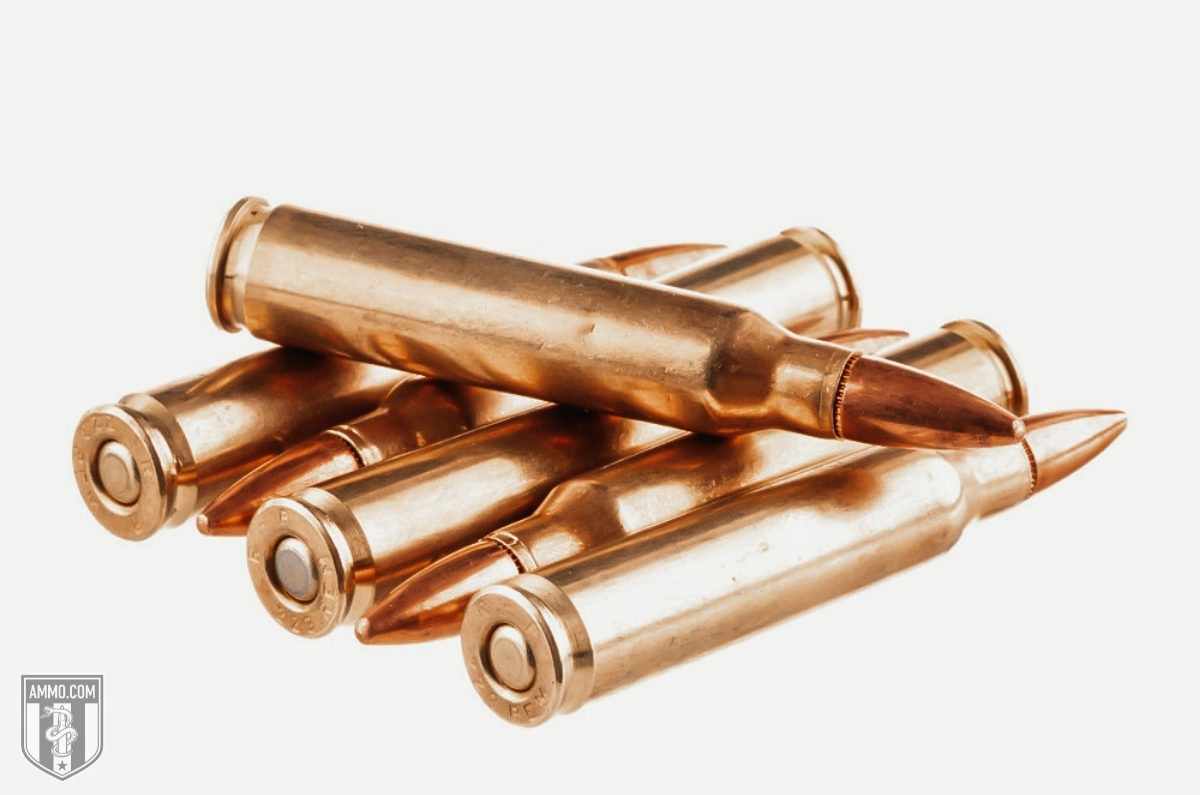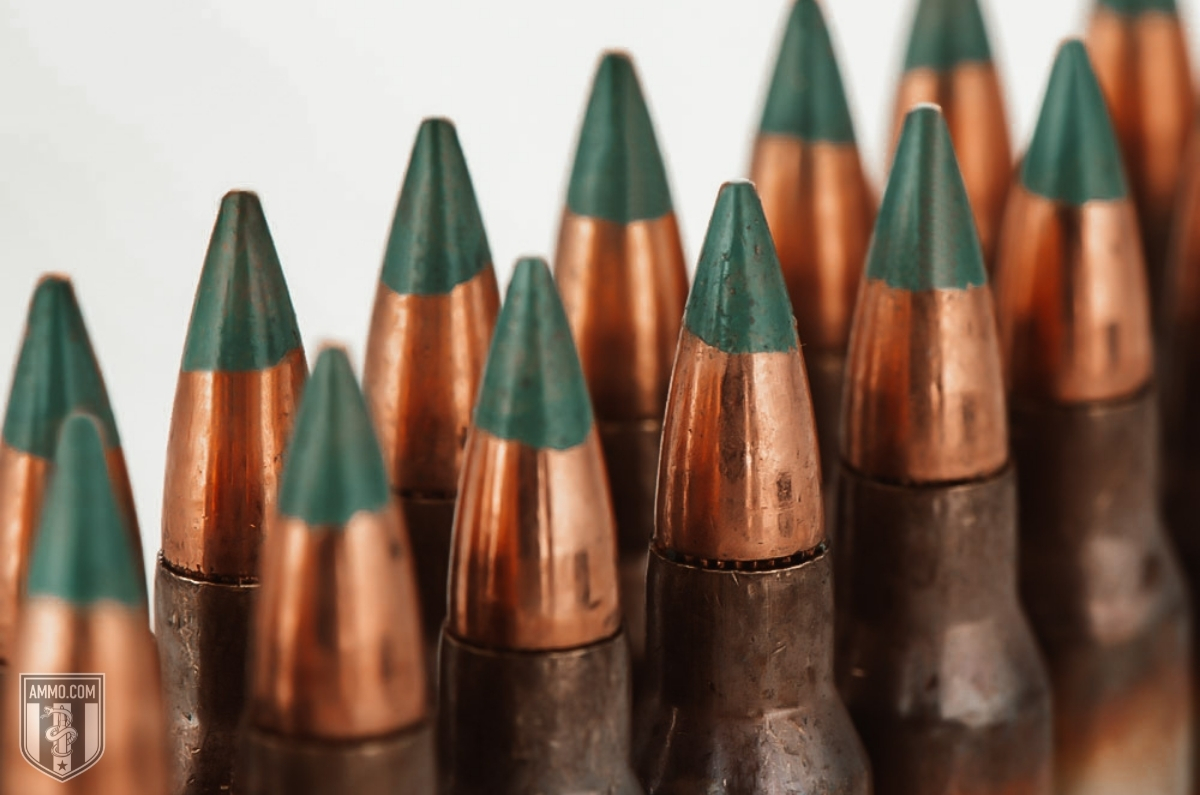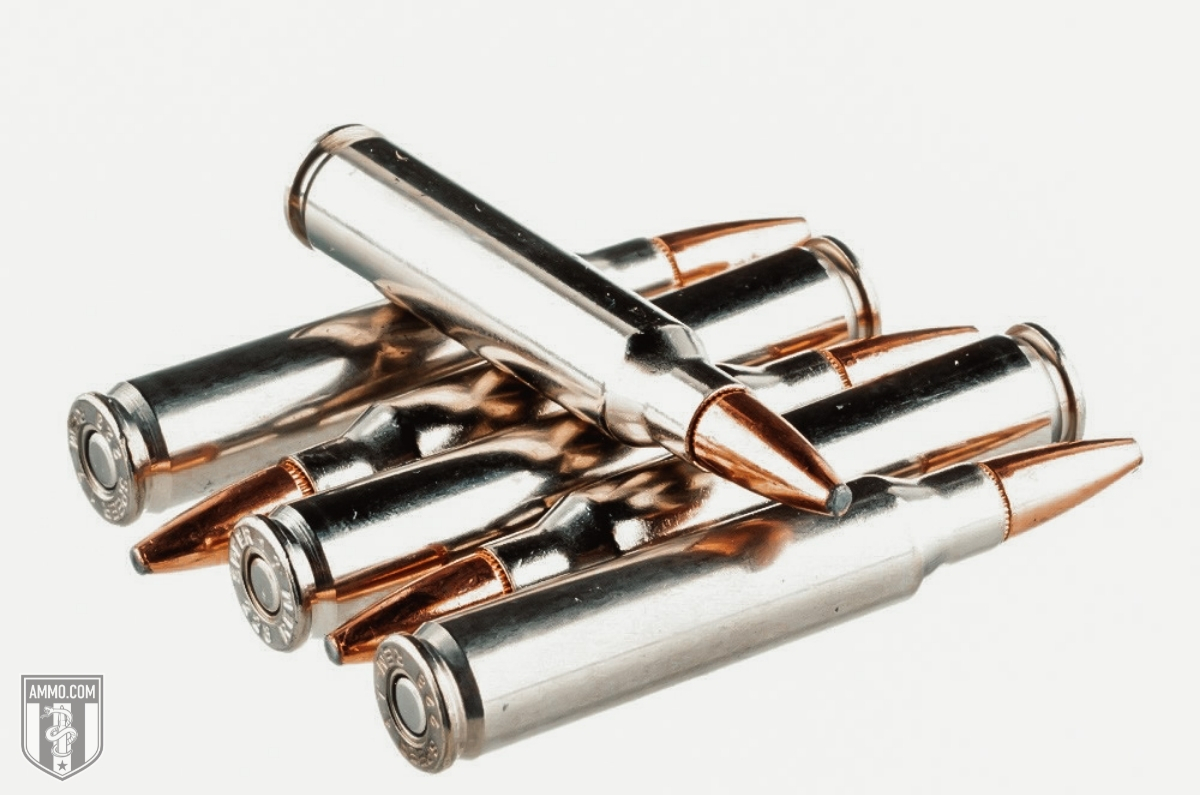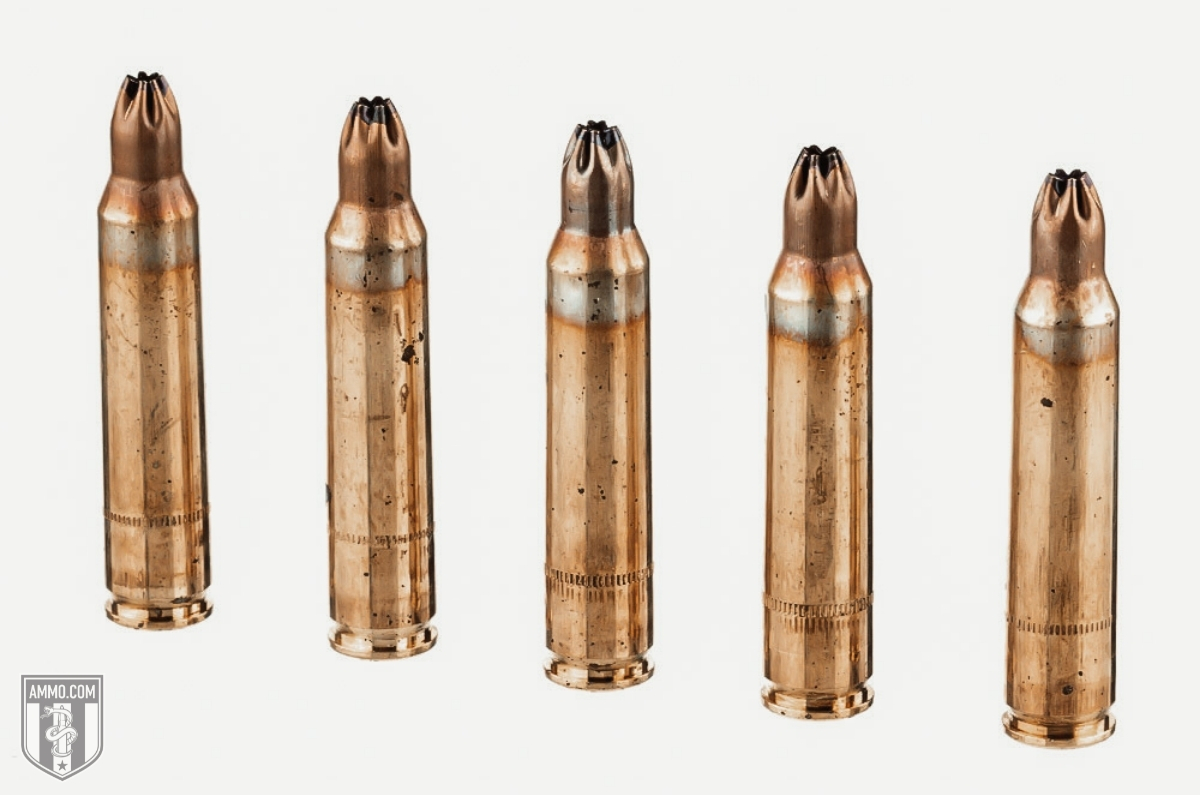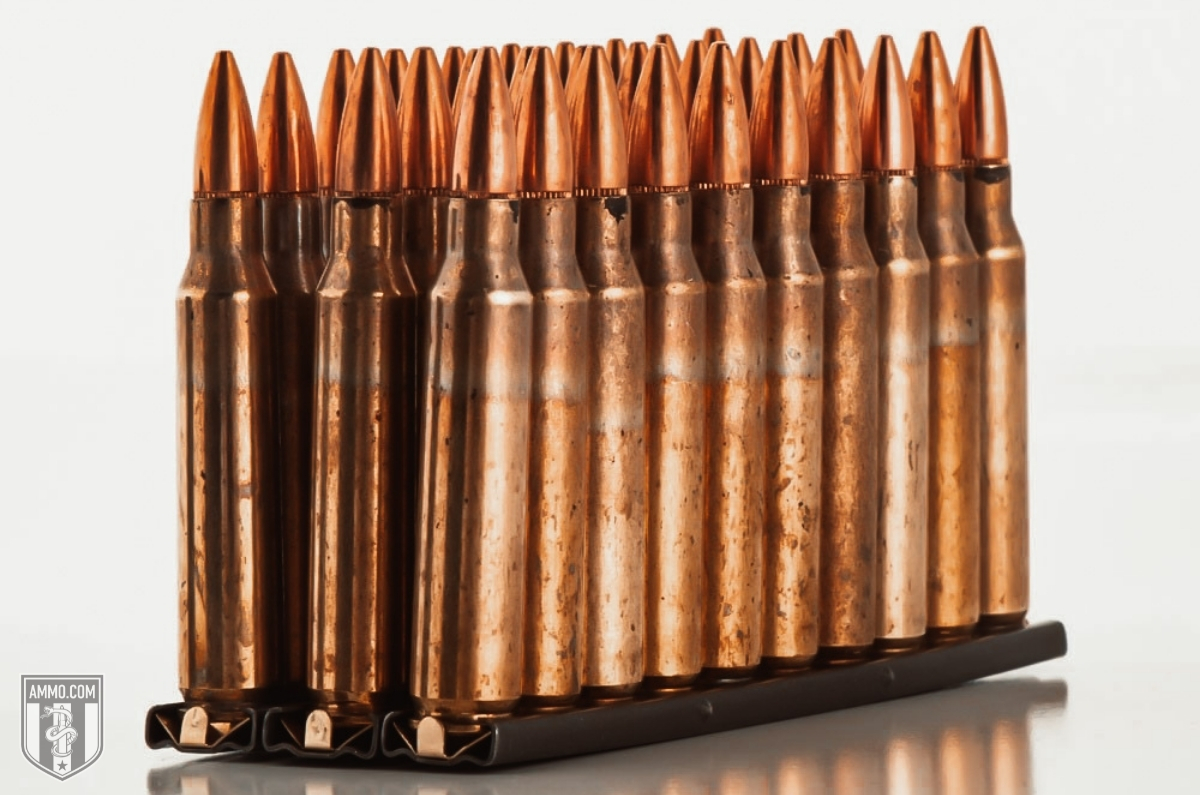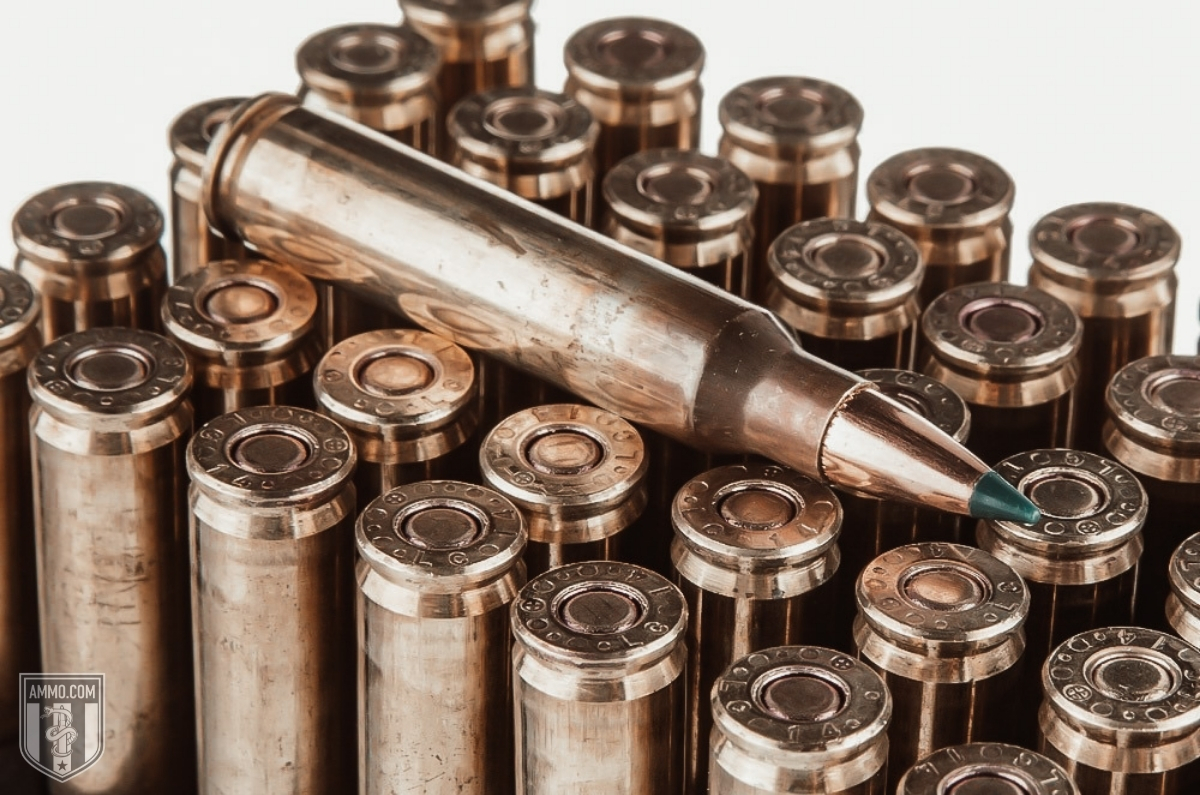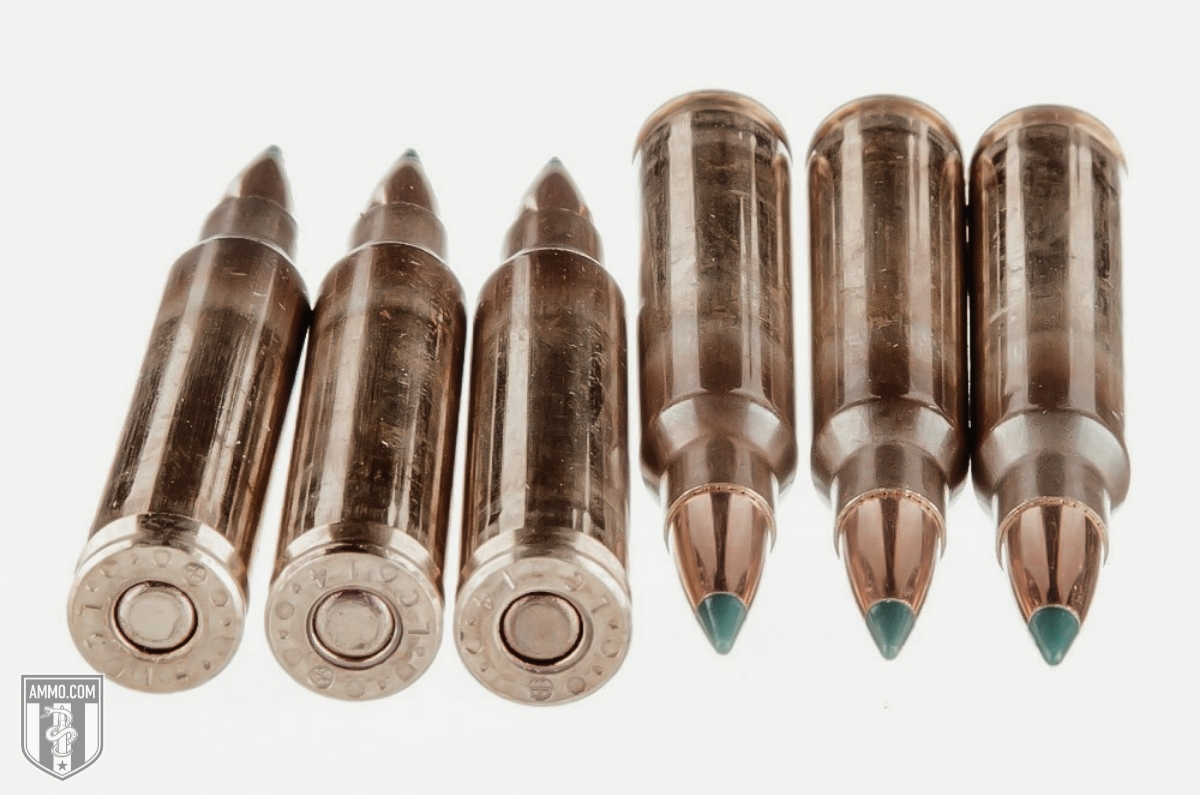.223 vs 5.56: Understanding the Nuances of the Two Cartridges
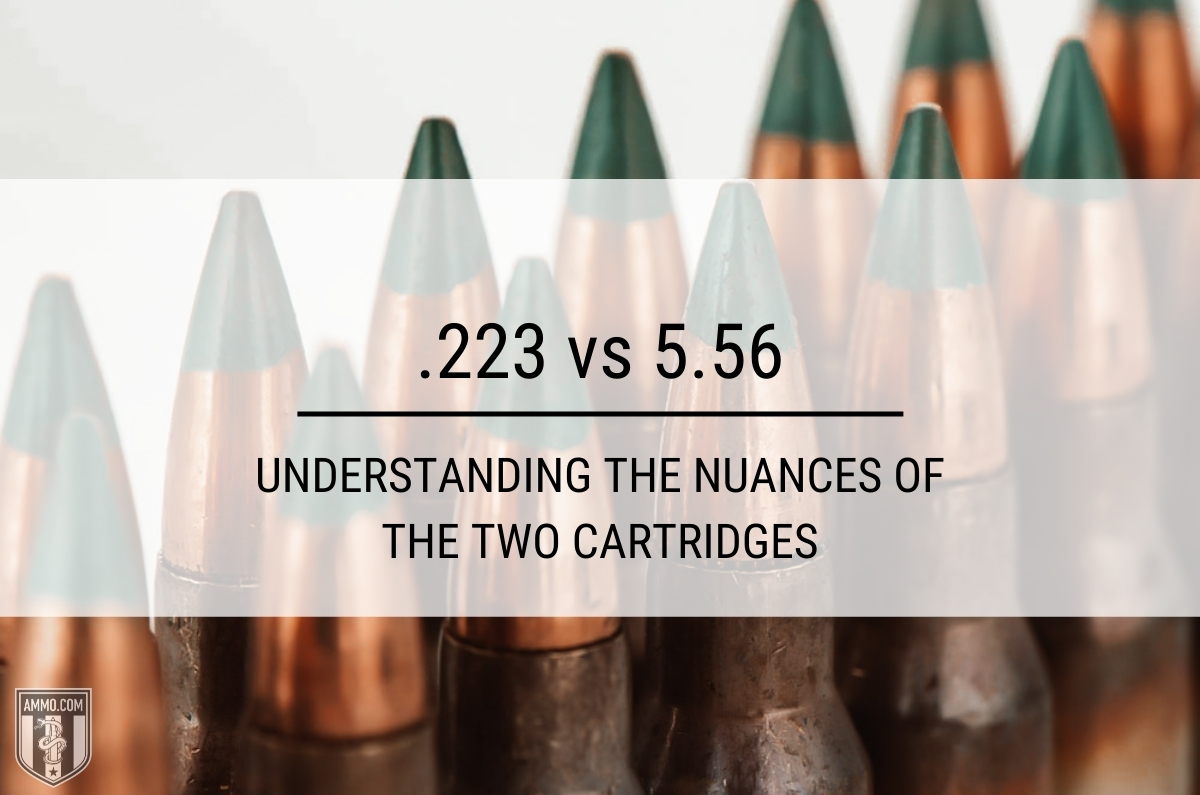 Many shooters will assert there is no difference between .223 Remington and 5.56x45mm NATO and that you can safely fire both from the same rifle. Others will contest that assertion, “The two ammo types are different!”
Many shooters will assert there is no difference between .223 Remington and 5.56x45mm NATO and that you can safely fire both from the same rifle. Others will contest that assertion, “The two ammo types are different!”
But which one is right? Who is correct?
Although the external dimensions of the cartridge case for .223 Rem and 5.56 NATO are identical, the chamber dimensions are different with the 5.56 NATO chamber having a 0.125” longer leade (the distance between the case mouth and the barrel rifling).
In addition to the leade difference, 5.56 NATO ammo is loaded for higher pressure based on the NATO cartridge specifications.
Therefore, 5.56mm NATO ammo should NOT be loaded into a .223 Remington chamber as it will cause higher chamber pressures during firing. This higher pressure can damage the shooter, rifle, or both.
However, shooting .223 Rem in a 5.56mm NATO chamber is perfectly safe, though some performance will be sacrificed due to the leade difference.
If you love shooting AR-15 rifles as I do, then grab some spare mags, and let’s dig deeper into the history, differences, and ballistics of .223 Remington ammunition and the 5.56x45mm NATO cartridge.
What is .223 Remington? The U.S. Military Answers The AK-47
After the Korean War, the U.S. Military started designing a new rifle cartridge for its frontline service rifles – in 1954 the .308 Winchester (7.62x51mm NATO) was adopted to fill this role.
However, after early engagements in Vietnam, the U.S. Army wanted a new rifle that fired a lighter, intermediate cartridge similar to the AK-47. This would allow soldiers to carry more ammo into battle while maintaining powerful terminal ballistics to remain combat effective.
This was the beginning of the .223 Remington.
Development of the .223 Rem rifle round began in 1957 and the final design was submitted by Remington Arms to the Sporting Arms and Ammunition Manufacturers' Institute (SAAMI) in 1962.
The development of the .223 Remington cartridge was a joint operation organized by the U.S. Continental Army Command between Fairchild Industries, Remington Arms, and Eugene Stoner of Armalite, using the .222 Remington as a parent cartridge.
The cartridge case of the .222 Remington was elongated 0.06” and the neck was shortened. These changes allowed for the new .223 Remington ammunition to have a 20% larger powder charge than its progenitor.
Eugene Stone was the primary inventor of the AR-10 rifle (chambered in 7.62 NATO), which he was invited to scale down to accommodate the new .223 Rem cartridge.
The resulting rifle that the military accepted was the M16, the civilian version being the AR-15. Since adoption, the AR-15 carbine has become the most popular sporting rifle in US history.
With its light weight and low recoil, the M16 is an ideal platform for full auto fire and the ammo is considerably lighter than its .308 Winchester counterpart. This allows soldiers to carry more ammo into battle for the same weight, meaning they can stay in the fight longer without impeding their mobility.
The M16 had some teething problems in the Vietnamese jungles, which soured some GIs on the platform entirely. Horror stories of poor reliability in Vietnam have (unfairly) plagued the M16 and AR-15 rifles for years.
However, after some tweaks were made to the M16 chamber lining, the powder used for .223 Rem ammo, increasing the speed of barrel twist rates (1:10 vs 1:7), and the widespread distribution of cleaning kits to all frontline soldiers; the reliability issues with early M16’s all but disappeared.
Since then, the M16 and the shorter barrel length M4 Carbine have become a ubiquitous symbol of American military prowess across the globe.
The original .223 Rem mil-spec ammo that the U.S. Military adopted was named M193, which fired a 55 gr full metal jacket (FMJ) bullet at a muzzle velocity of 3260 FPS with a muzzle energy of 1294 foot-pounds.
The new .223 Remington cartridge had sufficient long range capability out to 500 yards while maintaining accuracy.
The .223 Rem was released to the civilian market one year before adoption by the U.S. Army, and varmint hunters enjoyed the new cartridge’s low recoil, extreme accuracy, and lower pressure.
The new .223 Remington cartridge simply outperformed the .222 Rem and the .222 Rem Magnum in almost all categories and has become the de facto varmint hunting cartridge ever since.
It was not long before all the major firearm manufacturers offered semi-auto and bolt action rifle in the new .223 Remington cartridge.
Some popular .223 Rem rifle offerings include:
- Remington 700
- Ruger Hawkeye
- Savage Axis
- Sako TRG
- Ruger Mini-14 (semi-auto)
- And, of course, the AR-15
For varmint hunters, lower bullet weight options are available from 40 gr all the way up to 55 gr. Light weight bullets like these will want to utilize a slower barrel twist rate to ensure the bullets do not fragment upon exiting the barrel. A 1:12 twist is ideal for these lighter bullets.
For reference, a 1:12 barrel means that the bullet will experience 1 full revolution every 12” of barrel length.
If you need a little more “oomph” or want to stretch your rifle’s legs a little, heaver 62-80 grain bullets will help you get that long range accuracy that you crave. Faster twist rate barrels, such as a 1:7, will be ideal for these heavier bullets.
The .223 Remington M193 cartridge served the U.S. Army all the way through Vietnam, however, in 1980 FN Herstal changed the game.
What is 5.56mm NATO? We Can Rebuild It – Better, Stronger, Faster
In 1980, the Belgian firearms and ammo manufacturer Fabrique Nationale (FN) Herstal submitted their designs for the SS109 5.56x45mm cartridge to NATO for approval. The SS109 fires a 62-grain FMJ bullet with a mild steel penetrator tip at 3,110 fps and has a muzzle energy of 1,325 ft-lbs.
The U.S. Military designation for the 5.56mm NATO SS109 is the M855.
The new 5.56mm NATO cartridge had identical external dimensions to the .223 Remington, however, the NATO cartridge can handle a higher maximum pressure. As with many things in life, sometimes the newer, shinier toy is not always the best.
The adoption of the SS109 NATO round has come under some criticism due to battlefield reports of the ineffectiveness of the 5.56’s stopping power, accuracy, and effective range. This has led to several advancements in 5.56mm NATO ammunition.
One of the biggest criticisms of the SS109 NATO cartridge was its inability to yaw (tumble) and fragment. The M193 was well known for tumbling and fragmenting upon entry into soft tissue, causing additional damage to the target.
The Mk 262 was the next iteration of the 5.56mm NATO round was one that fired a 77-gr OTM (open tip match) bullet designed for the Mk 12 SPR (squad precision rifle). Special Forces became fond of the Mk 262 as it offered better terminal ballistics in the M4 carbines than what was observed with the SS109 NATO rounds. However, the Mk 262 was not adopted for widespread use due to the increased cost of heavier OTM bullets.
The Mk 318 was the next 5.56mm NATO cartridge evolution that used an open tip design to facilitate soft tissue damage and a solid brass penetrator base for added barrier penetration.
This allows it to be employed against targets with or without body armor. Furthermore, the Mk 318 will fragment upon impact and is not dependent bullet yaw (tumbling) like the M193 and M855.
The most recent iteration of the 5.56mm NATO round is the M855A1 (ingenious naming, I know!) And the reason for its development is even more awe-inspiring to say the least. The M855A1 was developed because the U.S. Military wanted to go more “green” and move away from lead-core bullets.
The M855A1 proved to have several distinct advantages over traditional M855 ammo. It was slightly more accurate, provided improved terminal ballistics and wounding capacity, as well as increased barrier penetration.
The M855A1 fires a 62-grain FMJ bullet with a solid copper core and steel penetrator tip extending past the jacket and has been in service since 2010.
The Difference Between .223 and 5.56

As mentioned earlier, the .223 Remington and 5.56x45mm NATO have identical case dimensions. Furthermore, the cartridge brass is not thicker between the civilian .223 Rem cases and the NATO cartridge (unlike .308 Winchester vs 7.62x51mm NATO). This means that the case capacity and powder charge will be similar between .223 Rem and 5.56mm NATO.
So, what’s the difference between them?
.223 vs 5.56: Chamber Dimensions
The most significant difference between .223 Remington and 5.56mm NATO is their chamber dimensions and how they were designed – this has a lot to do with their intended purpose.
If you think about it, military service rifles need to be reliable and function under harsh conditions. This means there might be debris in the chamber or carbon buildup, and a soldier cannot whip out his cleaning kit in the middle of a firefight.
The NATO chamber (or mil-spec chamber) is designed for increased reliability over supreme accuracy. To accomplish this, the NATO chamber utilizes a longer leade (sometimes called freebore length) and a shallow angle. This enhances feeding and reliability as it reduces the potential for carbon buildup to cause a jam.
Freebore length is defined as the distance between the case mouth and the barrel rifling, it’s the same thing as the leade.
A rifle with more freebore will have the added bonus of having a higher muzzle velocity (fps) but suffer somewhat on accuracy when compared to a rifle with less freebore. This is because there is more “jump” between the tip of bullet and where it engages the barrel rifling.
Now, let’s compare the NATO chamber to the .223 Remington chamber.
The .223 Remington chamber has a shorter leade/freebore and a sharper angle when compared to the 5.56mm chamber.
Generally, a chamber with a shorter leade (or throat) and sharper angle will result in greater accuracy at the cost of higher chamber pressures and lower velocities. In contrast, a longer throat will have lower accuracy but lower chamber pressure and higher velocity.
The 5.56mm chamber has a leade distance that is 0.125” longer than the .223 Remington chamber.
Now I’m sure you’re thinking, “That isn’t all that much difference”, and I understand what you’re thinking. However, when you’re dealing with chamber pressures, a longer throat can make a huge difference.
.223 vs 5.56: Chamber and Ammo Max Pressure
There is some confusion surrounding the listed maximum pressure for the .223 Remington based on CIP and SAAMI specs. The CIP, Commission Internationale Permanente, is the European Union’s equivalent to the Sporting Arms and Ammunition Manufacturers’ Institute (SAAMI) that regulates NATO ammunition specifications and testing.
SAAMI specs for .223 Remington list 55,000 psi as the maximum pressure for the round.
However, the CIP states that .223 Remington and 5.56mm rounds have the same maximum pressure at 62,366 psi. This is primarily due to differences in the testing protocols between the two organizations.
However, when the testing protocols are normalized, .223 Rem consistently is around 5,000 psi lower pressure than the 5.56mm NATO ammunition.
Now that we’ve established that 5.56mm rounds exhibit higher chamber pressure, let’s take a look at why this can cause a catastrophic failure when you load them into a .223 chamber.
The .223 chamber was designed with maximum accuracy in mind, with a shorter leade and lower pressure in mind.
In contrast, the 5.56mm chamber was designed with a longer throat for enhanced reliability and feeding to cope with battlefield conditions as it is a military cartridge.
If you accidentally load 5.56mm rounds in one of your bolt action rifles chambered for .223, dangerous things CAN happen when you pull the trigger.
During firing, chamber pressure spikes exponentially (not linearly). So, that 5,000 psi difference between .223 Rem and 5.56mm rounds CAN cause a pressure spike that is 10,000-15,000 psi OVER the maximum pressure for the .223 chamber based on SAAMI specs.
The shorter leade and sharper angle designed to enhance accuracy in the .223 chamber causes this pressure spike as they were designed for lower pressure ammo.
Regardless, that’s A LOT of pressure that the .223 Remington chamber is NOT built to handle.
Now, you’ll notice that I emphasized the word “can” quite a bit in the last few lines. This is because not all chambers and ammo are created equal.
Just because you load 5.56mm rounds into your .223 Remington rifle does NOT mean that you’ve turned it into a walking hand grenade ready to explode at the drop of a hat (or hammer).
There are many shooters that routinely fire 5.56mm NATO ammunition out of a .223 Remington chamber with zero issues, but this does NOT mean that it is a safe practice.
Not all 5.56mm NATO ammunition is loaded to actual NATO specs and may not be close to max pressure allowed by the CIP.
However, there’s no way to know by simply looking at the cartridge case if you’ve got a hot NATO round or a milder one.
Is it safe to fire 5.56mm NATO rounds in a 223 Remington chamber?
NO! DO NOT fire ammunition labeled as 5.56mm NATO in 223 Remington chambered rifles and/or handguns.
It’s simply not worth the risk to your rifle or YOU as .223 Remington ammo is cheap and plentiful.
There are several semi-automatic rifles specifically chambered in .223 Remington, such as the Ruger Mini-14. Therefore, if you own a Ruger, it is very important that you know what ammo type you are loading into your magazines.
What about the opposite situation?
Is it safe to fire 223 Remington ammunition in a 5.56mm chamber?
Yes, .223 Rem ammo can be safely fired from 5.56mm chamber
However, there is the potential that you will experience reliability issues and reduced accuracy when you do so.
The .223 Remington was designed for lower pressure and a tighter chamber for enhanced accuracy. When you put a .223 Rem into a 5.56mm chamber, the longer leade will drop chamber pressure as per design.
This in turn can cause less pressure at the gas port which can lead to insufficient pressure to properly cycle AR-15 rifles (though I’ve never personally experienced this).
Furthermore, the longer throat on the 5.56mm chamber requires that the bullet “jump” a longer distance to engage the rifling, which negatively affects accuracy.
One other important thing to consider is that not all 5.56mm chambers are built alike.
Before firing 5.56mm rounds in your 5.56mm chamber, it is a good practice to have your chamber inspected by a competent gunsmith to ensure your chamber is up to mil-spec.
If you are unsure as to what chamber your rifle has, most all manufacturers will engrave this information on the barrel itself as you can see here.
If you are still unsure which ammo is safe to fire in your rifle, consult your gunsmith as he or she will be able to help you.
223 vs 556: Identifying NATO Ammo
If firing 5.56x45mm NATO in your .223 Remington chamber handguns, bolt-action, and AR-15 rifles is potentially detrimental to your health, how can you tell the difference between .223 Rem and 5.56mm NATO?
Measuring them is not an option as both cartridges have identical case dimensions, case capacity, and fire the same bullet weight projectiles.
If you have access to the cartridge packaging, it will typically specify which ammo type it is. If there is any mention of 5.56mm, M193, or M855, you know that the ammo is 5.56mm NATO.
However, if the original packaging is not available, the other method is to check the headstamp.
The headstamp is a calling card of sorts, it identifies the cartridge manufacturer and, in some cases, the year the cartridge was loaded. The headstamp is located on the base of the cartridge surrounding the primer pocket.
If you see 2-3 letters, 2-3 numbers, and a circle with a cross through the middle, it is 5.56mm rounds. The circle symbol is referred to as the NATO Cross.
Furthermore, a NATO military cartridge will also have a primer pocket crimp. This crimp is extra material added to the primer pocket to ensure a tight fit and prevent the primer from backing out of the cartridge during an automatic fire (potentially injuring the shooter’s eye).
However, if you see something like “.223 Rem Hornady” around the primer pocket, then you know it’s .223 Remington.
For more options, check out our Hornady 5.56 ammo page for the best deals!
There’s no doubt that the case headstamp is the definitive method for identifying whether or not you have a NATO military cartridge in your magazine. However, if you are still unsure, assume the cartridge is a 5.56mm NATO and treat it as such.
223 vs 556: Reloading Procedures
There are a few extra steps you need to take when reloading 5.56mm NATO brass.
One question that often comes up is, “Do I need 5.56x45mm reloading dies?” The answer is “No, they don’t exist” because the .223 Remington and 5.56mm NATO have identical case dimensions.
Therefore, all you need are standard .223 Remington reloading dies, my preferred rifle reloading die manufacturers are Redding, Hornady, and Dillon.
The second issue that you must deal with is the primer pocket crimp. This can be a major hassle if not removed as it can damage the new primer during insertion if the crimp is not removed.
There are 3 different options for removing a primer pocket crimp.
- Chamfer/Deburring Tool - This is the least desirable method as you run the risk of removing too much material from the primer pocket and primers will not seat tightly.
- Case Prep Station – Lyman and Hornady make lovely case prep stations that use a rotating primer pocket swager to remove the crimp and not take off excess material.
- Dillon Primer Pocket Swager – This is my preferred method as the swager can be bolted to your reloading bench and you can quickly remove primer pocket crimps with the swing of a lever.
These are the only two major issues that you need to deal with when reloading .223 Rem/5.56mm.
There are numerous bullet profile and bullet weight options to choose from to tailor your perfect .223 Remington ammunition.
You have access to 45-grain bullets for varmint culling to heavier 77-grain bullets if you really wait to shoot long-range with your AR-15, Ruger Mini-14, or Remington 700.
.223 vs 5.56: What’s the Deal With 223 Wylde Chamber?
Back in the day, AR-15 rifles only came in two chambers: .223 Remington and 5.56mm NATO.
As we’ve examined in this article, these two chambers are different and you can have problems if you fire 5.56mm rounds in a .223 Rem chamber.
But what if there was a hybrid? Something that combined the best of both chambers into something even better.
That’s what the Illinois-based gunsmith, Bill Wylde decided to do. He figured that he could modify a .223 Remington chamber to accept both ammo types without the inconvenience of having the potential to detonate the rifle.
What he came up with was combining the shallow 5.56mm NATO leade angle with the 0.224 freebore diameter used in SAMMI-spec 223 Remington chambers.
Being incredibly humble, Bill Wylde decided to name his new chamber the .223 Wylde.
The .223 Wylde incorporates the best of both worlds and allows shooters to fire .223 Rem and 5.56mm NATO from the same rifle.
The .223 Wylde chamber utilizes a 5.56 NATO throat so cartridges won't spike catastrophic pressure during firing, but keeps the improved freebore concentricity, and inherent accuracy, of the .223 Rem.
Taking all of this into consideration, the .223 Wylde is a straight upgrade to any AR-15 rifle or bolt action rifle.
But do you need to run out to your local gun store and buy a brand new .223 Wylde barrel?
Only if you want to. There’s nothing wrong with the barrel you currently have on your rifle, just know what the chamber is and feed it the appropriate diet of .223 Remington or 5.56mm NATO.
Then once you’ve shot out your current barrel it might be a wise decision to replace it with a .223 Wylde.
Conclusions
The .223 Remington and the 5.56x45mm NATO cartridge are two of the most prolific military cartridges of the modern era. They have identical external dimensions and case capacity, but the 5.56mm NATO is loaded to higher pressures.
Therefore, you should not fire 5.56mm NATO ammunition through rifles or handguns chambered in .223 Remington, like the Ruger Mini-14. The added pressure produced by the NATO rounds can cause severe damage to the rifle or the shooter due to differences in the barrel chambers.
However, .223 Remington can be safely fired from a 5.56mm chamber as it is a lower pressure round. Some potential accuracy may be sacrificed, but there is no danger of damage to the rifle or shooter.
If you ever have any question as to what chamber your barrel is outfitted with, seek the services of a qualified gunsmith.
The key to a safe shooting session is knowing what your rifle is chambered in and feeding it a steady diet of that ammo type. For those considering home defense, explore our best 5.56 ammo for home defense article to ensure you're properly equipped.
And remember, buying in bulk is always smart, make sure to check out our stock of bulk 223 ammo and 5.56 bulk ammo.
Ammo Comparisons
- .308 vs 5.56
- 6.5 Creedmoor vs .308
- .300 Blackout vs .308
- .300 Win Mag vs .308
- .243 vs .308
- .308 vs .30-06
- 7mm-08 vs .308
- .270 vs .308
- 7.62x39 vs .308
- .223 vs .308
- .338 Lapua vs .308
- .380 ACP vs 9mm
- .223 vs 5.56
- .300 Blackout vs 5.56
- 9mm vs 45 ACP
- 9mm vs 40 S&W
- .357 SIG vs 9mm
- 10mm vs 9mm
- 9mm vs 9mm Luger
- .243 vs .270
- .300 Win Mag vs .30-06
- .270 vs .30-06
- .40 vs .45
- 38 Special vs 357
- 9mm vs 40 vs 45
- 5.56 vs 7.62x39
- 338 Lapua vs .30-06
- .30-30 vs .30-06
- 300 PRC vs 338 Lapua
- .30-06 vs 7mm
- 300 Win Mag vs 338 Lapua
- 300 PRC vs 300 Win Mag
- 300 WSM vs 300 Win Mag
- 338 Win Mag vs 338 Lapua
- 12 Gauge vs 20 Gauge
- 10mm vs 357 Mag
- .30-30 vs 7.62x39
- 224 Valkyrie vs 22-250
- 17 HMR vs 22 Mag
- 7.62x39 vs .300 Blackout
- 45 ACP vs 45 Auto
- 45-70 vs 30-30
- 300 Blackout vs 223
- 357 Magnum vs 9mm
- 350 Legend vs 300 Blackout
- 224 Valkyrie vs 223
- 45 ACP vs 38 Super
- 6.5 Grendel vs .308
- 17 HMR vs 22 LR
- 10 Gauge vs 12 Gauge
- 22-250 vs 223
- 45 Colt vs 45 ACP
- 350 Legend vs 30-30
- 5.7x28 vs 223
- 5.7 vs 9mm
- 5.56 vs 5.7
- 22 vs 9mm
- Buckshot vs Birdshot
- 450 Bushmaster vs 308
- 450 Bushmaster vs 223
- Buckshot vs Slug
- 6.5 Grendel vs 5.56 vs 223
- 6mm ARC vs 6.5 Grendel
- 44 vs 45
- 458 SOCOM vs 5.56
- 357 vs 44
- 32 ACP vs 380
- 300 Win Mag vs 338 Win Mag vs 338 Lapua Mag
- 450 Bushmaster vs 458 SOCOM vs 50 Beowulf
- 6mm Creedmoor vs 6.5 Creedmoor
- TMJ vs FMJ
- 44 Special Vs 44 Magnum
- 45 90 vs 45 70
- 6.8 Western vs 6.8 SPC
- 50 Beowulf vs 50 BMG
- 26 Nosler vs 6.5 PRC
- 28 Gauge vs 410
- 6.8 SPC vs 5.56
- 6.8 SPC vs 6.5 Grendel
- 6.8 Western vs 7mm Rem Mag vs .28 Nosler
- 6.8 Western vs 6.5 Creedmoor
- 22 Hornet vs 223
- 6.8 Western vs 6.5 PRC
- .410 vs 12 Gauge
- .410 vs 20 Gauge
- 22 LR vs 22 Mag
- 6mm ARC vs 243
- 7mm-08 vs 270
- 243 vs 6.5 Creedmoor
- Nickel vs Brass Casing
- 204 Ruger vs 223
- 50 Beowulf vs 5.56
- 260 Remington vs 6.5 Creedmoor
- 6mm Remington vs 243
- 28 Nosler vs 300 PRC
- 50 Beowulf vs 50 AE
- 22 Nosler vs 22-250
- 450 Marlin vs 45-70
- 300 Win Mag vs 300 Norma
- 458 SOCOM vs 300 Blackout
- 38-55 vs 45-70
- 22 Hornet vs 22 LR
- 300 Norma vs 338 Lapua
- 338 Lapua vs 50 BMG
- 28 Nosler vs 300 Win Mag
- 28 Nosler vs 6.5 Creedmoor
- 204 vs 22-250
- 458 SOCOM vs 45 70
- 44 40 vs 45 70
- 6.8 SPC vs 6.5 Creedmoor
- 450 Bushmaster vs 30-06
- 7mm Rem Mag vs 300 Win Mag
- 30 Carbine vs 223
- 25-06 vs 30-06
- 26 Nosler vs 28 Nosler
- 16ga vs 12ga
- 30 06 vs 7.62 x54R
- 9mm Makarov vs 9mm Luger
- 350 Legend vs 223
- 30 Carbine vs 5.56
- 6.5x55 vs 6.5 Creedmoor
- 6.5 Creedmoor vs 270 vs 25-06
- M193 vs M855
- 450 Bushmaster vs 458 SOCOM
- 6.5 Grendel vs 6.5 Creedmoor
- 350 Legend vs 5.56
- .277 Fury vs 6.8 SPC
- 277 Fury vs 300 Win Mag
- 10mm vs .45 ACP
- 277 Fury vs 223
- 6.8 SPC vs 300 Blackout
- 6.5 PRC vs 6.5 Creedmoor
- 277 Fury vs 308
- 277 Fury vs 6.5 Creedmoor
- 350 Legend vs 450 Bushmaster
- 277 Fury Vs 5.56 NATO
- 10mm vs 40S&W
- 32 ACP vs 9mm
- 32 Special vs 9mm
- 8.6 Blackout vs 300 Blackout
- 30 Super Carry vs. 9mm
- 5.56 vs 9mm
- .50 Action Express vs 9mm
- 7.62x25 vs. 9mm
- 10mm vs 44 Magnum
- 300 Blackout vs 300 Win Mag
- 6.5 Grendel vs 300 Blackout
- 460 Rowland vs 10mm
- 300 RUM vs 300 PRC
- 300 Norma vs 300 PRC
- 45 GAP vs 45 ACP
- 7mm PRC vs 300 Win Mag
- 300 PRC vs 6.5 Creedmoor
- 300 PRC vs 308
- 357 SIG vs 357 Mag
- 7.62x39 vs 7.62x51
- 243 Win vs 223 Rem
- 30 Nosler vs 300 PRC
- 6.5 Creedmoor vs. 30-06 Springfield
- 450 S&W vs. 44 Magnum
- 6.5 Creedmoor vs. 300 Win Mag
- 454 Cassull vs. 45-70 Govt
- 454 Cassull vs. 44 Mag
- 7.62x54r vs. 308 Winchester
- 22 ARC vs. 223 Rem
- Subsonic vs. Supersonic Ammo
